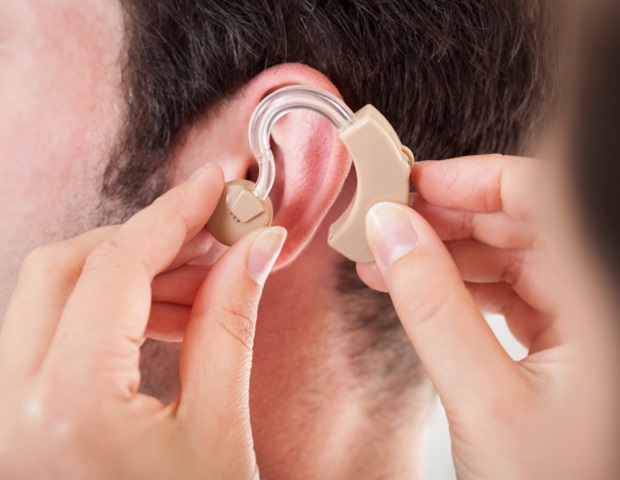
A new discovery from a team led by Massachusetts Eye and Ear researchers may bring scientists a step closer to developing treatments that regrow the lost cells that cause hearing loss.
In a new study, published online December 4, 2019, in Nature Communications, scientists report the identification of a new pathway linked to cell division in the ear. With this pathway, they were able to reprogram the inner ear's cells to proliferate and regenerate hair cell-like cells in adult mouse models.
This first-of-its-kind, proof of concept study may provide scientists with a pathway towards regeneration of sensory hair cells and other important inner ear cell types in people with hearing loss.
This paper is the first to show that by reprogramming, mature mammalian inner ear cells can be induced to divide and become hair cells, which are needed for hearing. These findings of renewed proliferation and efficient hair cell generation in a fully mature inner ear lay the foundation for the application of reprogramming and hair cell regeneration."
Zheng-Yi Chen, DPhil, senior study author, Associate Scientist at the Eaton-Peabody Laboratories at Mass. Eye and Ear, and an Associate Professor of Otolaryngology–Head and Neck Surgery at Harvard Medical School
Hearing loss is one of the most common forms of sensory deficits in people, affecting about 37 million Americans, according to federal statistics. Inner ear cells of humans and other mammals lack the capacity to divide or regenerate themselves; therefore, damage to the inner ear, in particular to the hair cells, leads to irreversible cell death and eventual permanent hearing loss.
Hair cells are the specialized inner-ear cells that turn the mechanical vibrations of sound waves into electrical signals that the brain can interpret, and people with genetic forms of hearing loss may suffer from a mutation that destroys these cells.
There are currently no pharmaceutical treatments available for hearing loss.
Reprogramming inner ear cells to divide using transcription factors
Previous research over several decades has shown that in the newborn mouse inner ear, cells can be induced to divide and regenerate hair cells. However, in fully mature mouse inner ears, this capacity for cell division is lost and hair cell regeneration is impaired. In humans, however, even a newborn inner ear is fully mature. Thus, Dr. Chen and colleagues said that in order to develop new treatment for human hearing loss, "it is essential to demonstrate that cell division and hair cell regeneration can be achieved in mature mammalian inner ear."In the new study, Dr. Chen's laboratory used a reprogramming approach by activating two transcription factors, Myc and Notch, in the adult mouse inner ear. They found that fully mature inner ear cells can be induced to divide and further, that many reprogrammed inner ear cells can be induced to regenerate hair cells efficiently in vivo, or in a living organism. Importantly, the new hair cells had characteristics of specialized auditory hair cells, with the presence of transduction channels and were able to form connections with auditory neurons.
Hearing loss can be caused by the loss of many inner ear cell types. The ability for remaining cells to divide to repopulate is one way to achieve regeneration, which could lead to hearing recovery.
"Our work revealed that reprogramming is achieved by re-activation of early inner ear developmental genes so that mature inner ear regains properties of young inner ear, which enables them to re-divide and regenerate," Dr. Chen explained.
Future research looks toward targets for pharmaceutical treatments
This work builds on a 2014 study from this research team identifying the role of Notch in hair cell proliferation. In that study, Dr. Chen's team showed that Notch is involved in the proliferation and regeneration of hair cells in neonatal mouse inner ear."The most significant aspect of the current study is the fact that fully mature mammalian inner ear still retains the capacity to divide and regenerate if it is being sufficiently reprogrammed, which removes a fundamental barrier that has prevented inner ear regeneration necessary to be developed to restore hearing," Dr. Chen further elaborated.
Dr. Chen's laboratory is working on the discovery of drug-like molecules to achieve cell division and hair cell regeneration in the mature inner ear and in large animal models, including pigs.
"We hope that our research can serve as a model for the regeneration of other tissues with similar properties that are unable to regrow cells, such as in the retina and the central nervous system," he added.
Massachusetts Eye and Ear






No comments
Post a Comment